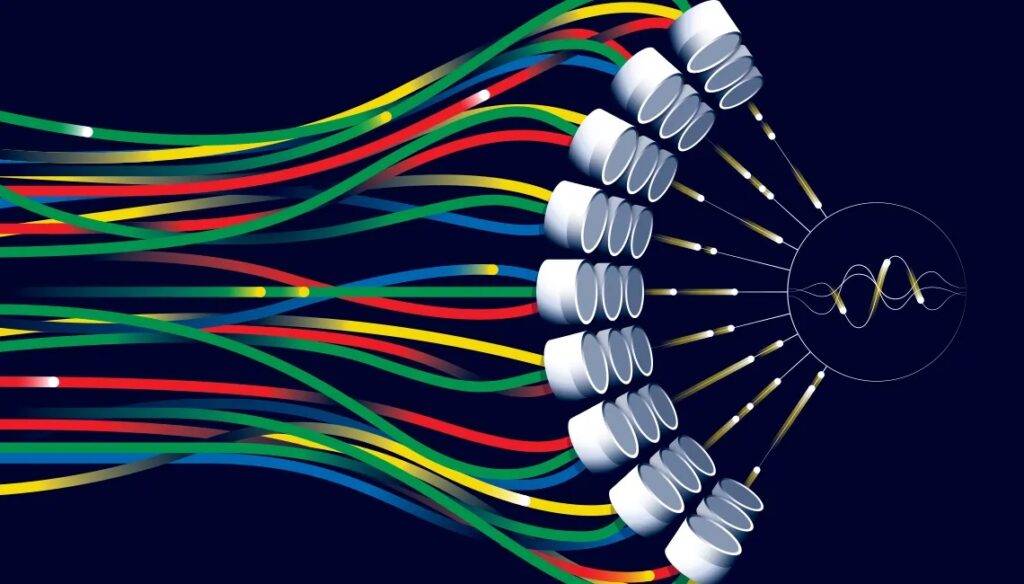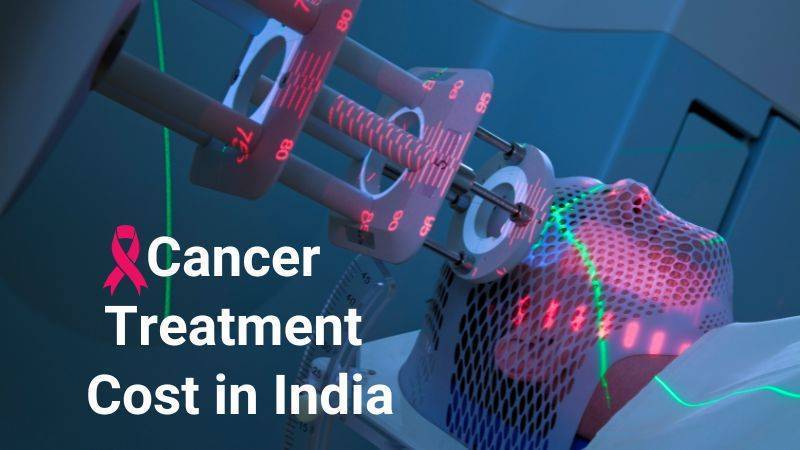Histotripsy has emerged as a beacon of innovation in the ever-evolving landscape of medical technology. It promises a future where precise tissue ablation can be achieved without the invasiveness of traditional surgical methods. But what makes histotripsy stand out? The answer lies in its unique mechanism of action, which harnesses the power of ultrasound to mechanically disrupt tissue structures. This article delves deep into the mechanism of histotripsy and how it paves the way for precise tissue ablation, especially in the realm of cancer treatment.

What is Histotripsy?
Histotripsy, a groundbreaking medical technique, is rapidly gaining traction in the healthcare sector due to its potential to revolutionise tissue ablation procedures. The term “histotripsy” is derived from the Greek words “histo,” meaning tissue, and “tripsy,” meaning to break. Histotripsy is a non-invasive approach to tissue disruption, and its unique mechanism of action sets it apart from any other innovations. . The concept of histotripsy was first introduced at the University of Michigan in 2004. Since its inception, the technique has undergone significant advancements, with researchers continually exploring its potential applications and refining its methodology. The term itself encapsulates the essence of the procedure: a method to break down soft tissue.
How does Histotripsy work?
The Fundamental Mechanism: Cavitation
Cavitation, a phenomenon central to histotripsy, refers to the formation, growth, and subsequent collapse of gas or vapour-filled bubbles within a liquid medium when subjected to rapid pressure changes. In the context of histotripsy, the human body’s tissue serves as this liquid medium, and high-intensity, short-duration ultrasound pulses induce the rapid pressure changes. When tissues are exposed to these potent ultrasound pulses, the alternating high and low pressures lead to the creation of minuscule bubbles or cavities. These bubbles might initially form around pre-existing gas pockets or microscopic impurities within the tissue. As the ultrasound pulses persist, these bubbles expand due to the negative pressure phases of the ultrasound wave.
Bubble Dynamics: The Heart of Tissue Disruption
The true essence of histotripsy is realised during the bubble collapse phase. Following the negative phase, the positive pressure phase of the ultrasound wave causes the expanded bubbles to undergo a swift and violent implosion. This rapid collapse generates potent local shock waves and produces high-velocity liquid jets. These intense mechanical forces, stemming from both the shock waves and the jets, act upon the surrounding tissue. The outcome is a mechanical breakdown of the tissue at a cellular level, resulting in the tissue being fractionated into a liquefied form. This liquid consists of a homogenised blend of cell debris and the extracellular matrix.
How does Histotripsy achieve precision in action?
In the realm of medical interventions, precision is paramount. The ability to target specific tissues or cells without affecting the surrounding structures can be the difference between successful treatment and unintended complications. Histotripsy, with its groundbreaking approach to tissue ablation, exemplifies this principle of precision in action. Let’s delve deeper into how histotripsy achieves such unparalleled accuracy.
- Targeted Ultrasound Beams: The Foundation of Precision
Histotripsy employs high-intensity ultrasound pulses to induce cavitation within the targeted tissue. The beauty of this technique lies in the ability to focus these ultrasound beams to a specific point, known as the focal zone. Within this focal zone, the energy of the ultrasound waves is concentrated, ensuring that the cavitation-induced tissue disruption occurs primarily within this localised area. This means that only the tissue within the focal zone is affected, while the surrounding structures remain untouched.
- Real-time Imaging: Guiding the Way
One of the standout features that bolster histotripsy’s precision is the integration of real-time imaging. As the ultrasound waves are administered, they not only induce cavitation but also provide a live visual feed of the treatment area. This dual capability allows clinicians to monitor the formation and collapse of bubbles in real-time. Such immediate feedback ensures that the treatment is progressing as intended and allows for on-the-fly adjustments. If, for instance, the bubbles are not forming in the desired location or pattern, the clinician can instantly modify the parameters to achieve the desired effect.
- Selective Tissue Disruption: A Surgical Scalpel without the Blade
The precision of histotripsy can be likened to the accuracy of a surgeon’s scalpel, but without the invasiveness of a blade. The controlled generation and collapse of microbubbles ensure that only the targeted cells or tissues are disrupted. This selectivity is especially crucial when treating tumours or lesions located close to vital organs or critical structures. For example, when targeting a tumour adjacent to a major blood vessel, the precision of histotripsy ensures that the vessel remains unharmed, reducing the risk of bleeding or other complications.
- Minimising Collateral Damage: Safety First
In many medical treatments, especially those involving radiation or surgery, there’s always a concern about collateral damage to healthy tissues. Histotripsy’s precision minimises this risk. By confining the tissue disruption to the focal zone, histotripsy ensures that the surrounding healthy tissues are spared. This not only enhances the safety profile of the treatment but also promotes faster healing and recovery.
What sets Histotripsy apart from other cancer treatments?
Histotripsy’s distinctive non-thermal approach to tissue ablation offers a fresh perspective in the realm of medical interventions. While many therapeutic ultrasound techniques, such as High-Intensity Focused Ultrasound (HIFU), rely on generating heat to achieve therapeutic effects, histotripsy stands apart. Traditional methods work by raising the temperature of the targeted tissue to a point where cellular proteins denature, leading to cell death. Although effective, this thermal approach has inherent risks. Elevated temperatures can inadvertently damage surrounding healthy tissues, especially if the heat spreads beyond the targeted area. Moreover, tissues sensitive to heat, like neural tissues, can be at risk of unintended damage. In contrast, histotripsy operates on a fundamentally different principle. Instead of using heat, it employs mechanical forces to achieve tissue disruption. This is achieved through the controlled generation and violent collapse of microbubbles within the tissue, a process known as cavitation. The implosive collapse of these bubbles generates intense local shock waves and produces high-speed liquid jets. These forces act on the tissue, leading to mechanical breakdown at the cellular level without the need for heat.
The non-thermal nature of histotripsy offers several advantages. Firstly, it minimises the risk of collateral thermal damage. Since there’s no heat involved, there’s no risk of inadvertently burning adjacent tissues. This is especially crucial when treating tumours or lesions located close to critical structures or organs, where precision is paramount. Secondly, the absence of heat means that there’s no risk of heat-induced complications. Thermal burns, tissue necrosis, and heat-induced inflammation are common concerns with thermal treatments. With histotripsy, these concerns are virtually eliminated, making the treatment potentially safer for patients. The non-thermal mechanism of histotripsy also opens doors to a range of applications, especially in areas where traditional thermal treatments might be deemed risky. For instance, in the treatment of tumours located near vital organs or neural structures, histotripsy can offer a safer alternative. Its precision ensures that only the targeted tissue is disrupted, leaving the surrounding structures unharmed. Moreover, the non-thermal approach of histotripsy might be more comfortable for patients. Without the sensation of heat, treatments could be less painful, reducing the need for anaesthesia or sedation.
Histotripsy’s non-thermal approach to tissue ablation sets it apart in the world of medical interventions. By harnessing the power of mechanical forces rather than heat, it offers a safer, more precise, and potentially more comfortable treatment option for patients. As research continues and the applications of histotripsy expand, its non-thermal mechanism is poised to redefine the standards of non-invasive medical treatments.
Natural Healing and Real-time Monitoring
Histotripsy’s approach to tissue ablation is not only about the immediate destruction of targeted cells but also encompasses the body’s subsequent response and recovery. After the treatment, the liquefied tissue debris, a byproduct of histotripsy, becomes a focal point for the body’s innate healing mechanisms. Macrophages, specialised white blood cells, swiftly move to the treated area, engulfing and digesting the cellular remnants. This cleanup process is a testament to the body’s resilience and adaptability. Over time, as the cellular debris is cleared, the void left by the treatment begins to heal. Depending on the treatment site and the extent of the ablation, this healing can manifest as the regeneration of healthy tissue or the formation of connective tissue, ensuring that the treated area integrates with its surroundings.
Complementing this healing process is the advanced capability of real-time monitoring offered by histotripsy. The very ultrasound waves responsible for inducing cavitation and tissue disruption also serve a dual purpose as imaging agents. As the treatment progresses, clinicians can visualise the formation, expansion, and collapse of the microbubbles in real-time. This continuous feedback loop allows for immediate adjustments to treatment parameters, ensuring that the therapy remains on course and achieves its intended outcomes. Such real-time imaging is invaluable, especially in scenarios where the margin for error is minimal. It ensures that the treatment remains confined to the targeted area, safeguarding surrounding structures and tissues. In essence, real-time monitoring acts as a guiding hand, steering the treatment to its optimal conclusion while minimising potential risks.
What are the advantages and challenges of Histotripsy?
The ultrasound waves used in histotripsy not only induce cavitation but also provide real-time imaging of the treatment area. This dual capability allows clinicians to monitor the formation and collapse of bubbles, ensuring that the treatment is progressing as intended. This real-time feedback is invaluable in adjusting treatment parameters on-the-fly, ensuring optimal outcomes.
Advantages of Histotripsy:
- Non-Invasive: Histotripsy eliminates the need for surgical incisions, reducing the risk of infections and improving recovery times.
- Precision: The therapy can be precisely targeted, ensuring minimal damage to surrounding healthy tissues.
- Safety: Its non-thermal nature reduces the risk of collateral damage, making it safer for sensitive tissues.
- Real-time Monitoring: Clinicians can adjust treatment parameters in real-time, ensuring optimal outcomes.
- Natural Healing: The body’s natural healing mechanisms take over post-treatment, leading to minimal scarring.
Challenges of Histotripsy:
- Limited Depth: The effectiveness of histotripsy can be limited by the depth of the target tissue, as deeper tissues may be harder to reach.
- Potential for Overlapping Waves: There’s a risk of overlapping waves causing unintended tissue damage.
- Equipment Complexity: The equipment required for histotripsy is complex and can be expensive.
- Research Stage: While promising, histotripsy is still in the research phase for many applications, and its long-term effects are not fully understood.
Histotripsy, with its unique mechanism of action, offers a revolutionary approach to tissue ablation. Its ability to precisely target tissues without the need for incisions or heat positions it as a promising tool in the medical field, especially in cancer treatment. As research continues and technology advances, histotripsy’s potential in precise tissue ablation is set to redefine the boundaries of medical intervention.





